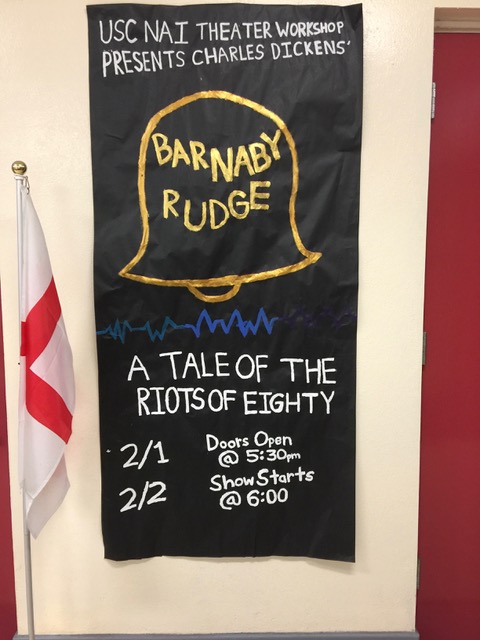
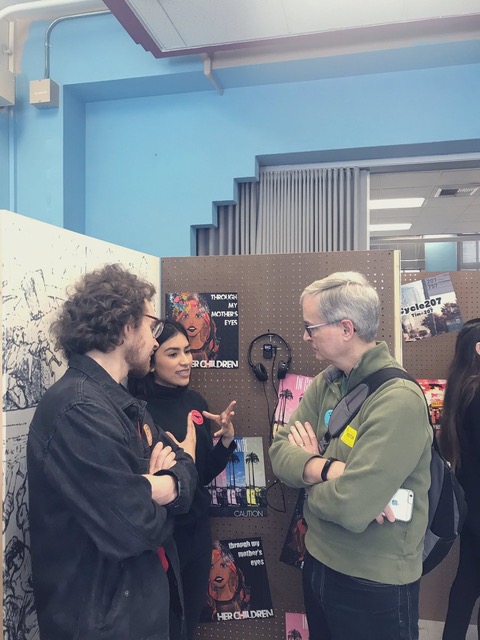
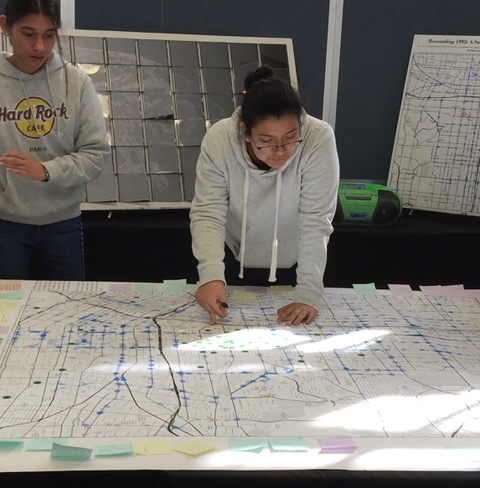
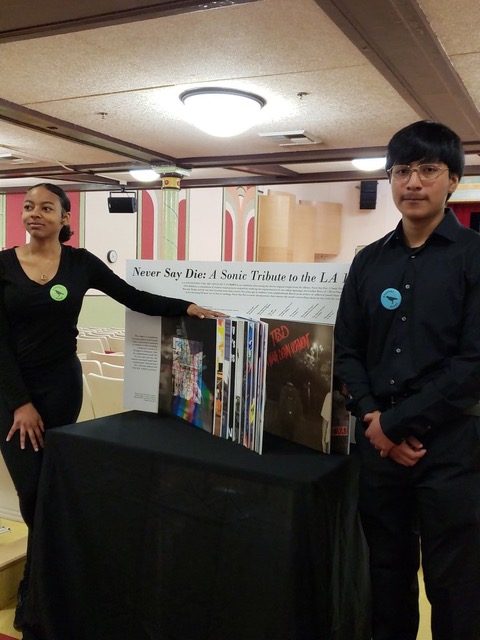
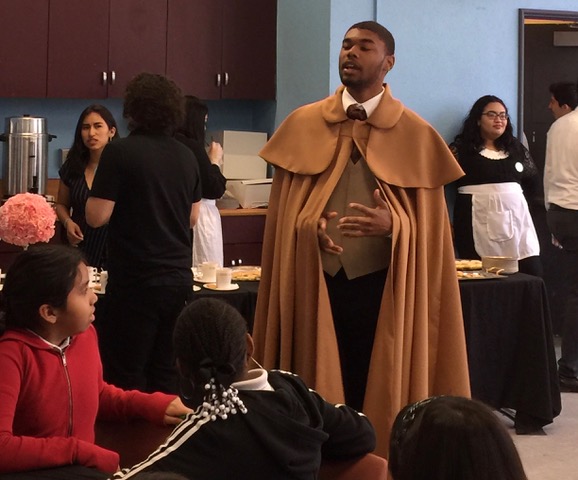
When I started attending Dickens Universe in 2010 I learned that the Dickens Project sponsored a national high-school essay competition, and that the winning essayists were invited, along with their teachers, to attend the Universe. I read the posted essays, but I didn’t think too deeply of the program beyond that. Several years later when I joined the Board of the Friends of the Dickens Project I learned that a specific high school, the Foshay Learning Center, a Title 1 school in South Los Angeles, had submitted a number of essays in the past but had never won, and that Jon Michael Varese went down to the Center to find out why. There he learned that Jacqueline Barrios, AP English instructor, used the Dickens Universe-selected novel as the basis for intensive study, with one of the student outcomes to be an essay on the novel. After returning from Foshay and presenting this information to the Friends, the Board decided to redirect its essay competition funds and energytoward Jacqueline and her students, and developing a long-term relationship with them.
Starting with Dombey and Son in 2015 the Friends have supported Ms. Barrios and her students by providing funds and educational outreach during the school year. Besides purchasing roughly eighty copies of the novel of the year, the Friends have provided enhanced academic support to Ms. Barrios with guest lectures (by Jon Michael Varese, John Bowen, and others) and a “Reading Buddies” program featuring both scholars and members of the Friends (including Glenna Matthews, David Brownell, Natalie Kopp, and Christian Lehmann).
I found out about the “Reading Buddies” program last year from Ryan Fong, and asked Ms. Barrios if I could help out in 2018 with Barnaby Rudge. As one of the “Reading Buddies,” I made a five-minute video discussing highlights of a selection of chapters; the students viewed my video and then wrote blog entries showing their knowledge of the chapters and giving me an opportunity to respond to their comments. I had so much fun participating in this way, that I wanted to see the other ways in which the students demonstrated their knowledge of Barnaby Rudge.
I went to the Foshay Center (with Christian Lehmann as my guide) to view what the students did as part of the conclusion of their study of Barnaby Rudge. During the daytime I observed students educating other classes (the Foshay Center is K-12) on a “found sound” project that incorporated sounds from their neighborhood in 2018 that were influenced by sounds that Dickens described in London of 1780. The students produced an original CD, titled Never Say Die, A Sonic Tribute to the LA 1992 Rebellion, and designed album covers inspired by their selections. Additionally, the students presented a map of South LA (site of the 1992 Rodney King riots) where their classmates could identify areas in their neighborhood affected by the worst riots in US history, much as the Gordon Riots of 1780 were the worst riots experienced in the city of London. Furthermore, Christian and I listened to selections from finalists for the revamped essay contest. The students displayed an impressive depth of scholarship and understanding of Dickens’s text. The former student in me envied their talent.
In the evening Ms. Barrios’s students put on a dramatization of Barnaby Rudge, incorporating theatre, music, and interpretive dance to bring the story of Barnaby, Grip, and the Gordon Riots alive. As a Dickens enthusiast since my early teens and also involved in high school theatre, I was impressed with the commitment these students had to Dickens’s text, the emotion of Barnaby’s story, and the intensity of the Gordon Riots. The quality of their performance and their understanding of Dickens far exceeded my expectations.
Parts of the students’ work, including the found-sounds exhibition titled LA 1992/London 1780: Sounding Out A Crowd, will be displayed this summer at Dickens Universe, and the winners of the essay contest, along with Ms. Barrios, will be attending. I urge all Universe conferees to meet the students, view their exhibits, read the finalists’ essays, and give generously to the Friends of the Dickens Project so that we can continue to support the amazing work that Ms. Barrios and the Foshay Learning Center are doing with students. A future Dickens Universe scholar is counting on us.
